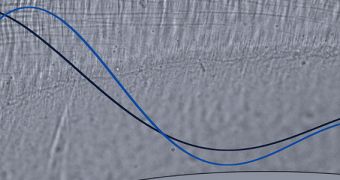A group of scientists from the Massachusetts Institute of Technology (MIT) and the University of Sussex, in the United Kingdom, recently discovered that a membrane in the human inner ear features pore-like nanostructures that allow us to mechanically differentiate between the sounds we hear. These pores play an important role in underlying our ability to tune in to a single voice or sound among many.
Selective hearing is a very important trait for our species, as it allows us to focus our attention on a single voice among a sea of sounds. Imagine talking to your friends in a crowded restaurant, which also plays background music. The number of sounds and noises competing for your attention is very large, yet you somehow remain able to focus almost exclusively on the person you are talking to.
This simple task, which our ears and brains perform automatically, has never been reproduced in computers or other artificial devices. Now that the underlying mechanism is better understood, computer engineers may finally be able to create machines that replicate this ability. These results may also be used to develop more advanced hearing aids.
The MIT research group discovered that the tectorial membrane in the human inner ear has over millions of years evolved a number of critical properties, including the presence of numerous nanopores that determine its firmness, or viscosity. The size and distribution of these pores is very important for determining whether or not the membrane displays high or low viscosity.
All of these pores are less than 100 nanometers across, the team reports in the latest issue of the Biophysical Journal. Their presence in the tectorial membrane allows for the mechanical filtration of sounds, so that we can focus on just a particular set of frequencies from the sounds we hear.
The research team was led by Jonathan Sellon, a graduate student at MIT, and includes professor of electrical engineering Dennis Freeman, former graduate student Shirin Farrahi, and research scientist Roozbeh Ghaffari. Sussex biologist Guy Richardson also contributed to the investigation.
The human ear is “extraordinary compared to conventional speech- and sound-recognition technologies,” explains Freeman, referring to how it is able to differentiate between competing sounds, even those emitted on the same frequencies. The expert says that a flawed assumption is the reason why scientists have thus far found it hard to accurately assess the role of this membrane in hearing.
The new investigation also hints at possible ways of manipulating hearing sensitivity and frequency discrimination in the human ear by manipulating the sizes and distribution of tectorial membrane nanopores via a variety of means, including biochemical manipulation.
The new research was supported by the US National Institutes of Health, the US National Science Foundation, and the Wellcome Trust, in the UK.

 14 DAY TRIAL //
14 DAY TRIAL //